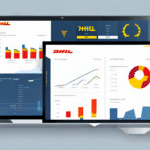Introduction to LSO and DEAR Inventory
Effective inventory management is crucial for businesses aiming to optimize operations and maximize profitability. Integrating Last Sales Order (LSO) with DEAR Inventory can significantly enhance inventory tracking and decision-making processes. This section provides an overview of LSO and DEAR Inventory, laying the foundation for understanding their integration.
What is LSO?
LSO (Last Sales Order) is a data management tool that enables businesses to monitor the most recent sales transactions for each product in their inventory. By tracking the last sales order, LSO provides insights into product demand trends, helping businesses maintain optimal stock levels. This reduces the risks associated with overstocking or stockouts, ensuring that inventory aligns with actual sales performance.
Understanding the DEAR Inventory System
DEAR Inventory is a comprehensive cloud-based inventory management system designed to streamline various business operations, including purchase orders, sales, invoicing, and reporting. With real-time inventory tracking and advanced analytics, DEAR Inventory empowers businesses to make informed decisions and maintain efficient workflows.
Benefits of Integrating LSO with DEAR Inventory
Integrating LSO with DEAR Inventory offers numerous advantages that can transform inventory management practices. This integration enhances visibility, efficiency, and decision-making capabilities.
Improved Inventory Visibility
Combining LSO data with DEAR Inventory provides a comprehensive view of inventory levels across all products. This enhanced visibility allows businesses to:
- Identify high-demand products quickly
- Spot slow-moving items that may need discounts or removal
- Optimize stock levels to match sales patterns
Enhanced Efficiency and Cost Reduction
The integration eliminates the need for manual inventory tracking, reducing the likelihood of errors and saving valuable time. Automation of purchase orders and sales tracking leads to:
- Lower operational costs
- Faster order processing
- Reduced labor expenses
Better Decision-Making and Forecasting
With accurate LSO data integrated into DEAR Inventory, businesses can leverage data-driven insights for strategic planning. This includes:
- Accurate demand forecasting
- Informed purchasing decisions
- Strategic product placement and promotion
How to Connect LSO with DEAR Inventory
Integrating LSO with DEAR Inventory is a systematic process that, when executed correctly, can yield significant benefits for inventory management.
Step-by-Step Integration Guide
- Add the LSO Module: Ensure that the LSO module is activated within your DEAR Inventory system.
- Customize LSO Settings: Tailor the LSO parameters to align with your specific business requirements, such as product categories and sales channels.
- Integrate with E-commerce Platforms: Connect DEAR Inventory with your e-commerce platforms or sales channels to enable automatic tracking of last sales orders.
- Utilize LSO Data: Begin using the integrated data to monitor sales trends and optimize inventory levels accordingly.
Optimizing LSO for Inventory Management
To fully leverage LSO within DEAR Inventory, businesses should focus on:
- Regularly reviewing sales data to identify trends
- Adjusting inventory levels based on LSO insights
- Implementing predictive analytics for future demand forecasting
Overcoming Challenges in LSO-DEAR Integration
While integrating LSO with DEAR Inventory offers substantial benefits, businesses may encounter several challenges. Addressing these effectively ensures a smooth integration process and maximizes the system's potential.
Ensuring Data Accuracy and Consistency
Accurate data is the backbone of effective inventory management. To maintain data integrity:
- Implement automated data entry processes to minimize errors
- Use validation rules to ensure data consistency
- Regularly audit data to identify and correct discrepancies
Managing Multi-location Inventory
For businesses operating across multiple locations, synchronizing inventory data can be challenging. Solutions include:
- Utilizing centralized inventory management systems
- Implementing real-time tracking across all locations
- Standardizing inventory processes to ensure uniform data collection
Handling Peak Seasons and Demand Spikes
Seasonal fluctuations can strain inventory systems. To manage these effectively:
- Maintain a buffer stock to accommodate unexpected demand surges
- Use LSO data to anticipate peak periods
- Adjust inventory thresholds based on historical sales trends
Best Practices for Managing and Maintaining LSO with DEAR Inventory
Adopting best practices ensures that the integration of LSO with DEAR Inventory remains effective and continues to provide valuable insights.
Developing Tracking Templates
Create standardized templates for tracking LSO data. This promotes consistency and simplifies the analysis process, enabling teams to swiftly interpret sales trends.
Regular Data Review and Updates
Frequent reviews of LSO data are essential for maintaining accuracy. Implement regular audit schedules and assign responsibilities to team members to ensure data remains current and reliable.
Tools and Resources for Effective LSO-DEAR Integration
Several tools and resources can aid businesses in optimizing their LSO-DEAR integration:
- Data Analytics Tools: Utilize platforms like Tableau or Power BI for in-depth data analysis and visualization.
- Inventory Management Software: Consider comprehensive solutions such as DEAR Systems for robust inventory control and management.
- Professional Consultants: Engage with inventory management experts who can provide tailored advice and strategies for optimizing your systems.
- Online Communities and Forums: Participate in platforms like Reddit's Inventory Management Subreddit to exchange knowledge and experiences with other professionals.
Case Studies: Successful LSO-DEAR Integrations
Examining real-life examples of businesses that have successfully integrated LSO with DEAR Inventory can provide valuable insights and inspiration.
Retail Company Reduces Carrying Costs
A retail company facing high inventory carrying costs and overstocked items integrated LSO with DEAR Inventory. By accurately tracking inventory levels and sales trends, the company was able to adjust stock levels proactively, resulting in a 30% reduction in carrying costs and a significant increase in profitability.
Manufacturing Firm Enhances Production Efficiency
A manufacturing company experiencing production delays due to inventory shortages implemented LSO-DEAR integration. This integration enabled real-time tracking of raw materials, ensuring that necessary components were always in stock. Consequently, the company saw a 25% increase in production efficiency and a noticeable reduction in lead times.
Conclusion
Integrating LSO with DEAR Inventory is a strategic move for businesses aiming to enhance their inventory management systems. This integration not only optimizes stock levels and reduces costs but also improves operational efficiency and decision-making processes. By following best practices and leveraging the right tools, businesses can achieve significant improvements in their inventory management outcomes.




















